Our young girls are bearing the burden of climate action. But should they be?
On the morning of Sept. 20, seven students walked out of my son’s eighth grade class to attend the climate strike. He was the only male.
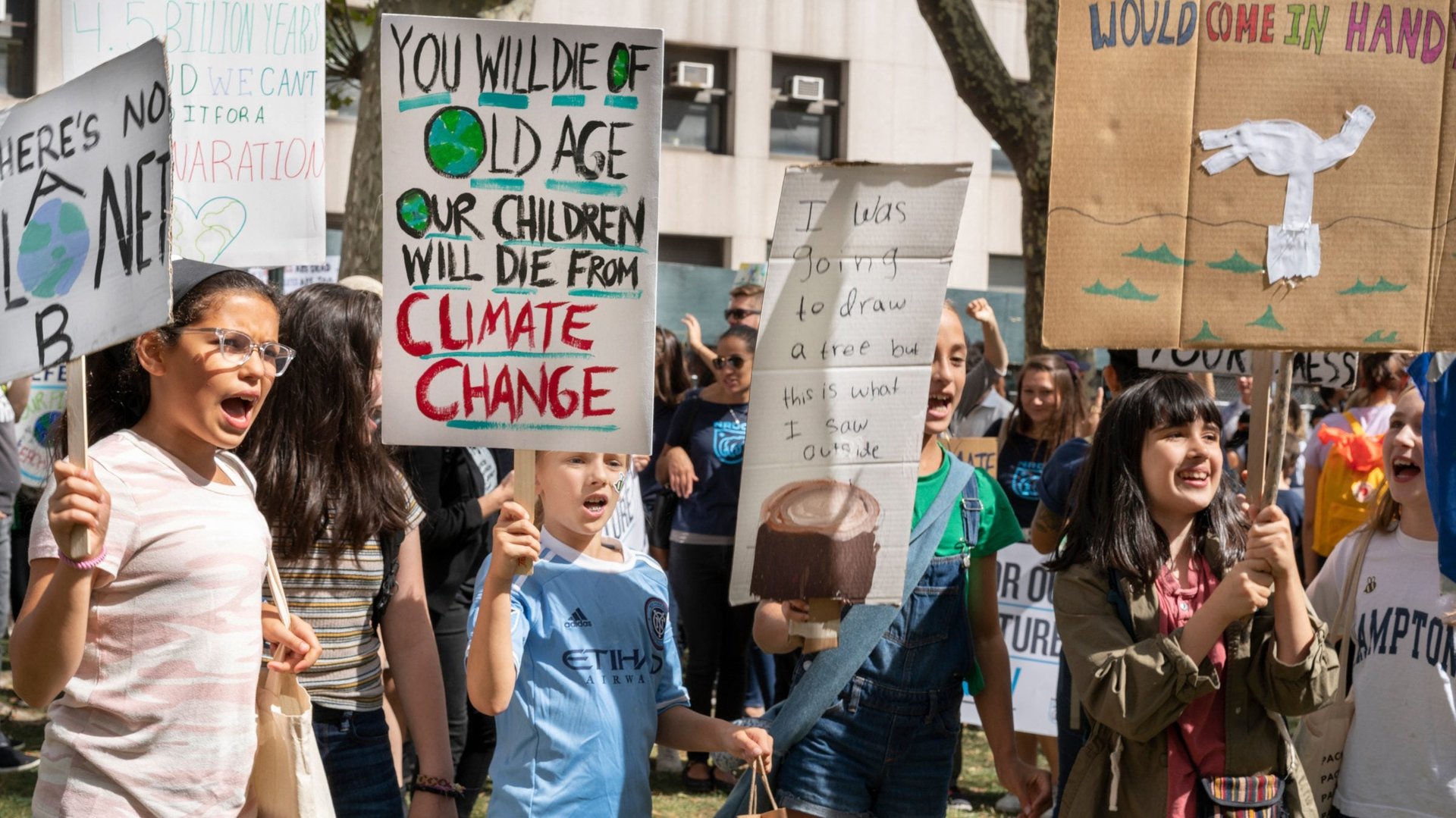

On the morning of Sept. 20, seven students walked out of my son’s eighth grade class to attend the climate strike. He was the only male.
I met him in downtown Manhattan, and together we made our way to Foley Square to join the throng of climate protesters.
Right away, it was evident that this march, like many of the previous youth-led marches my son and I had attended together, was largely made up of diverse young women.
He and I had rallied together for the gun control march at Washington Square Park on the anniversary of the 1999 Columbine High School shooting. We got on a 5:00 am bus to Washington, DC to attend the March for Our Lives protest organized by the teens who survived the shooting at Marjory Stoneman Douglas High School in Parkland, Florida.
My son Emmett is a sensitive boy. He wants to physically be present for these marches but he’s too shy to chant or wave a sign. He insists he doesn’t want to lead, he just wants to be counted.
That’s okay, and he’s not alone. Because while there are boys and young men who attend and lead these rallies, I have found that the most energized, motivated, passionate, and strongest voices are coming from young women, often young women of color.
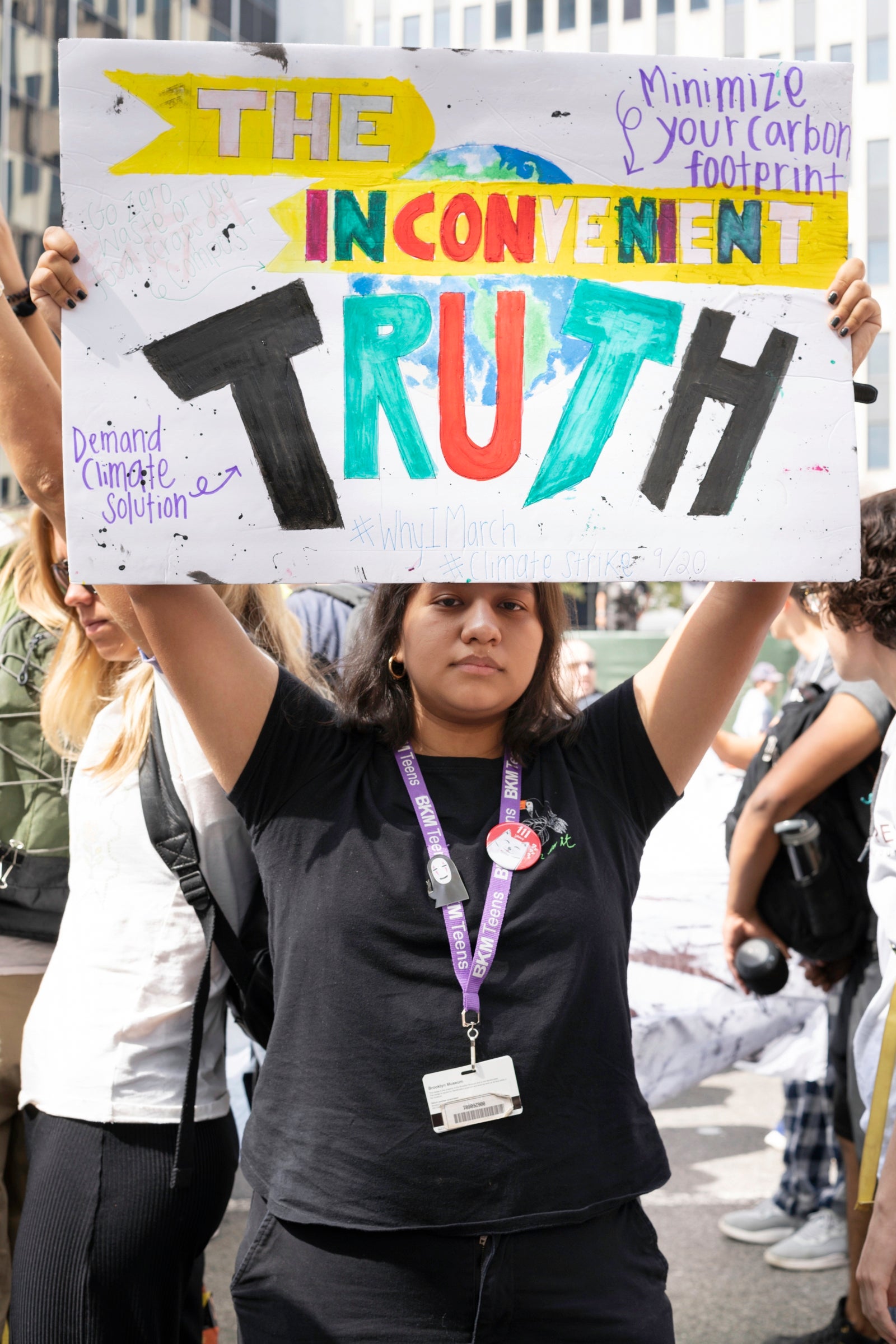
And rightfully so, since racial minority groups are more likely to be impacted by climate change, not least because their neighborhoods are often built in more vulnerable and compromised locations, where they are exposed to changing weather and dangerous environmental conditions.
Finding myself surrounded by so many diverse students at youth protests is especially inspiring for me. I often find myself to be the only woman of color at local political action meetings or when I attend volunteer events. I hoped that this meant things are changing.
Walking around the climate protests that day, I decided to take photographs of these girls protesting, so their participation could be documented and shared.
“This land is indigenous land,” one sign reminded me.
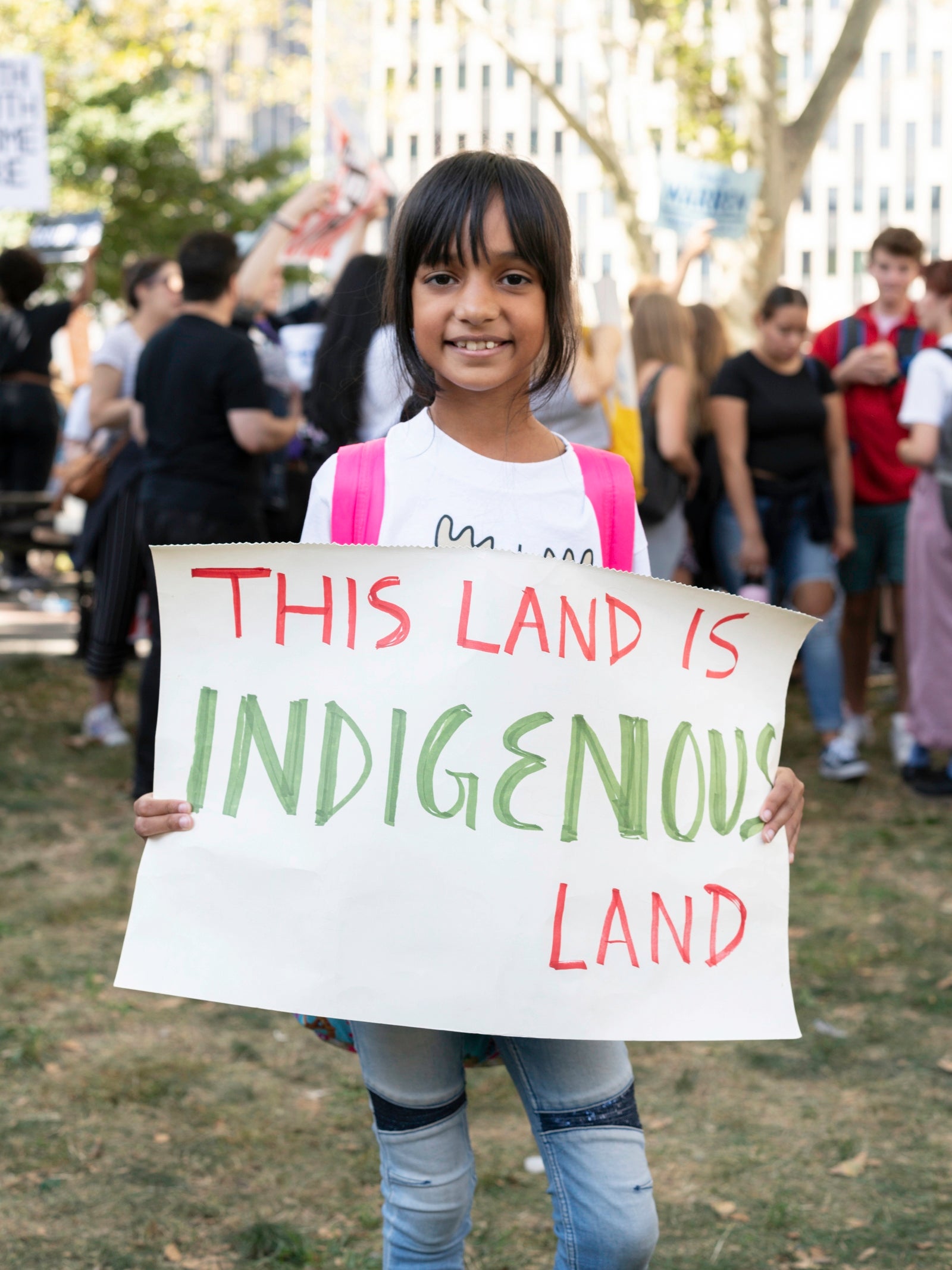
The next generations of activism has a chance to be shaped by these multiple viewpoints—but only if we are willing to listen to everyone’s voice.
Young activism
The word “protest” is inherently confrontational. But what I feel at these marches is solidarity. Everyone is there for a united purpose. When the crowds are as massive as they were that Friday, it’s reassuring to know that you are not alone in your fight. Every few steps, we encountered a different cluster of kids, some with coordinated signs and matching bandanas, some wearing their school uniforms.
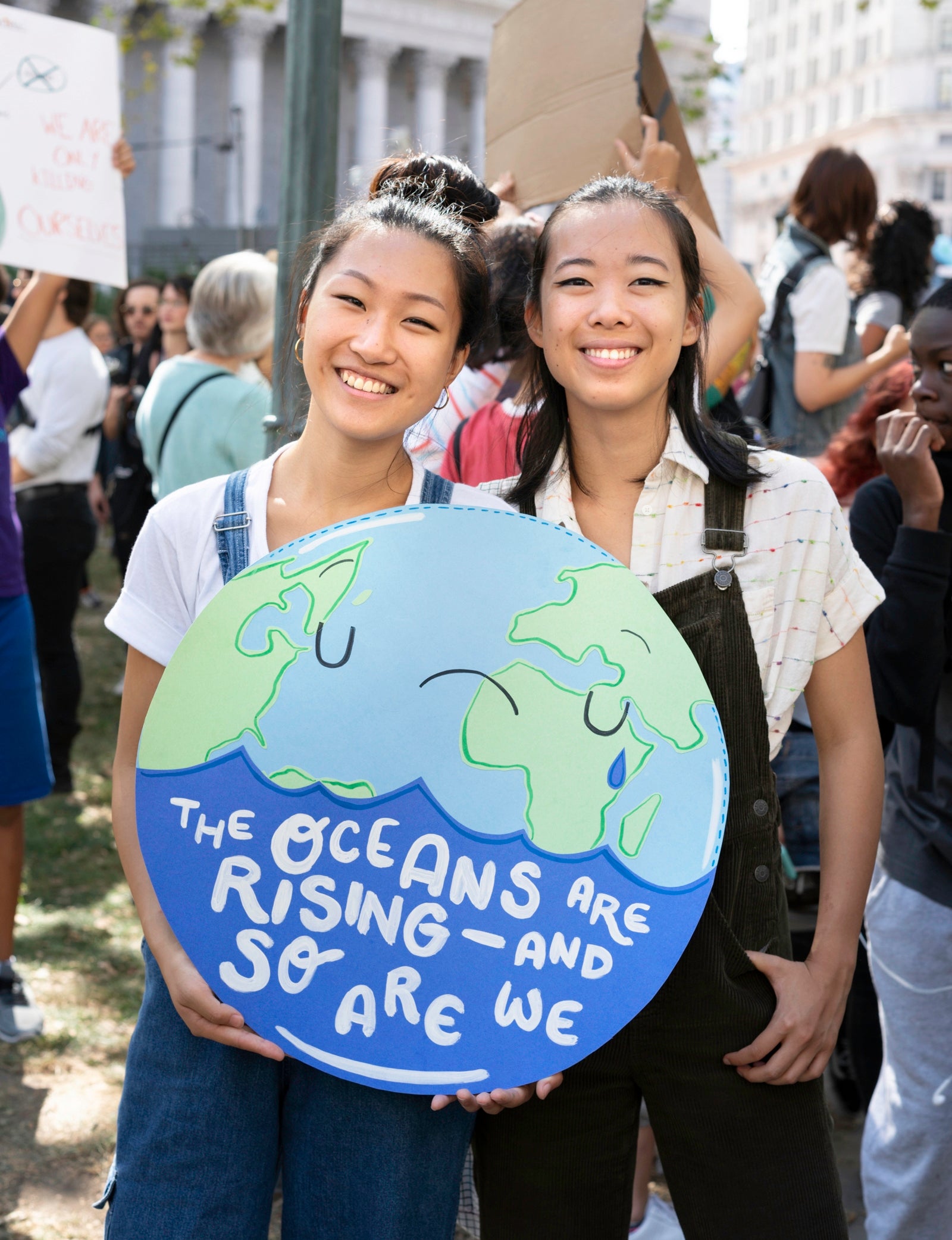
I saw a large crowd gathered around to watch a Native American group as they performed a dance. Protest signs have become a vehicle for showcasing one’s individuality, one’s pain, a witty message, to display your anger for all to see, maybe to be photographed and posted to social media.
Some of the most devastating signs read like indictments:
“You’ll die of old age. Our children will die of climate change!”
“I can’t believe I’m marching for facts!”
“Don’t burn my future!”
“We’re all gonna die!”
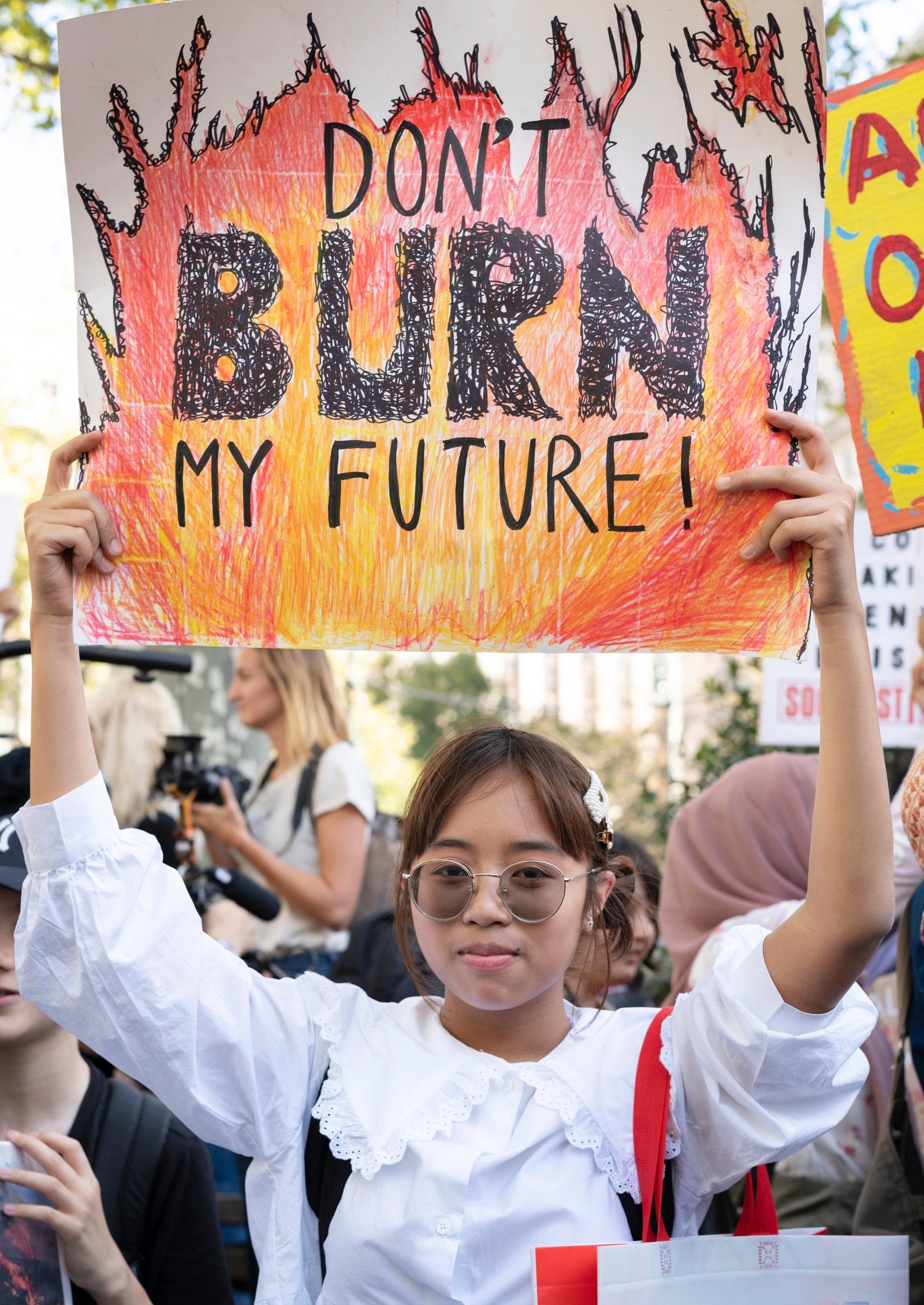
Young children holding up misspelled signs written in their childish scrawl, pleading for change, will always undo me.
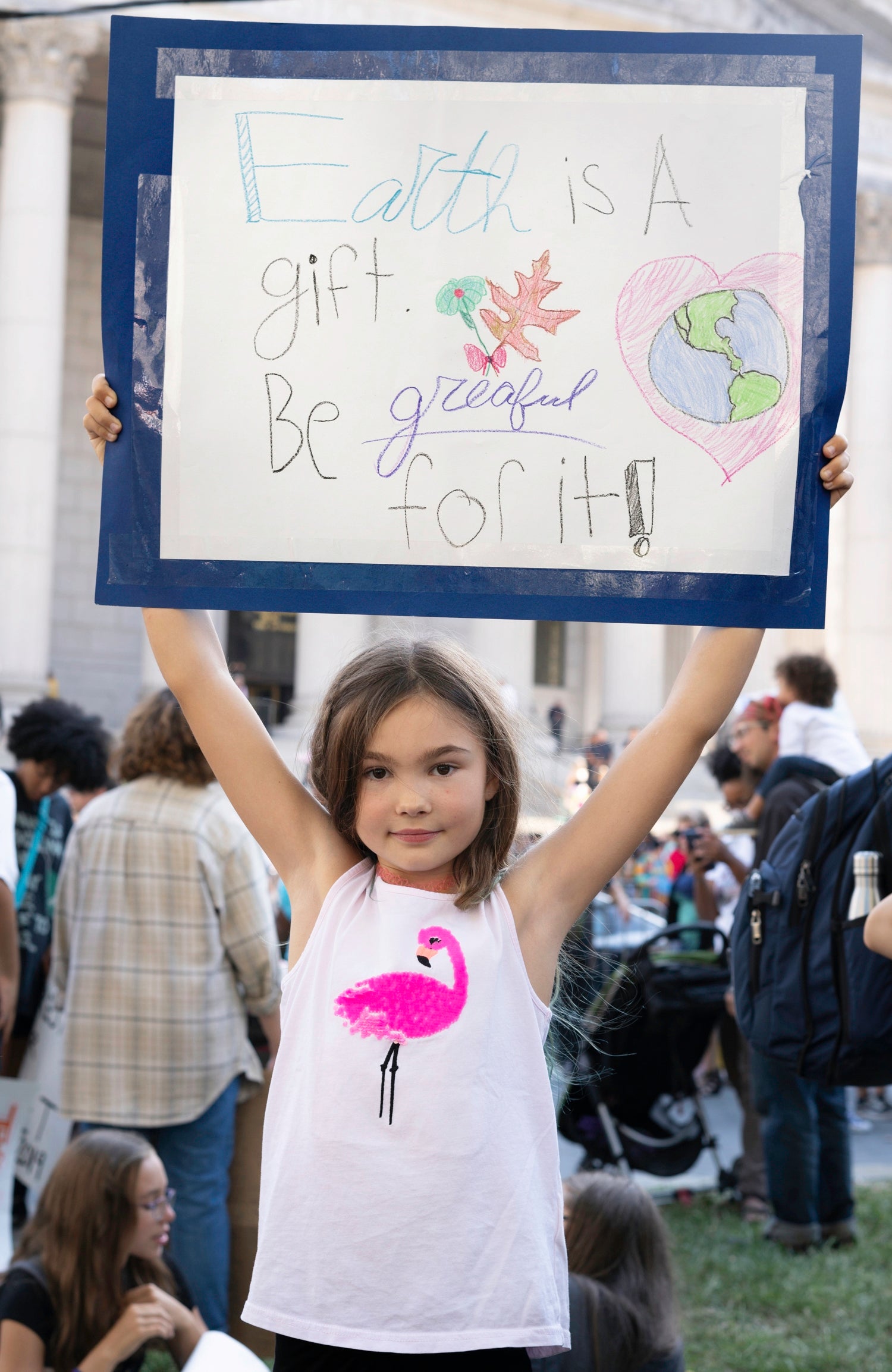
Who inherits the burden?
As proud and impressed as I am at the conviction of these young activists that brought so many of them down to City Hall that day, Greta Thunberg is right: These kids should be in school. They should not be out on the streets demanding that our governments and leaders believe scientific facts and put the environment over capital gains.
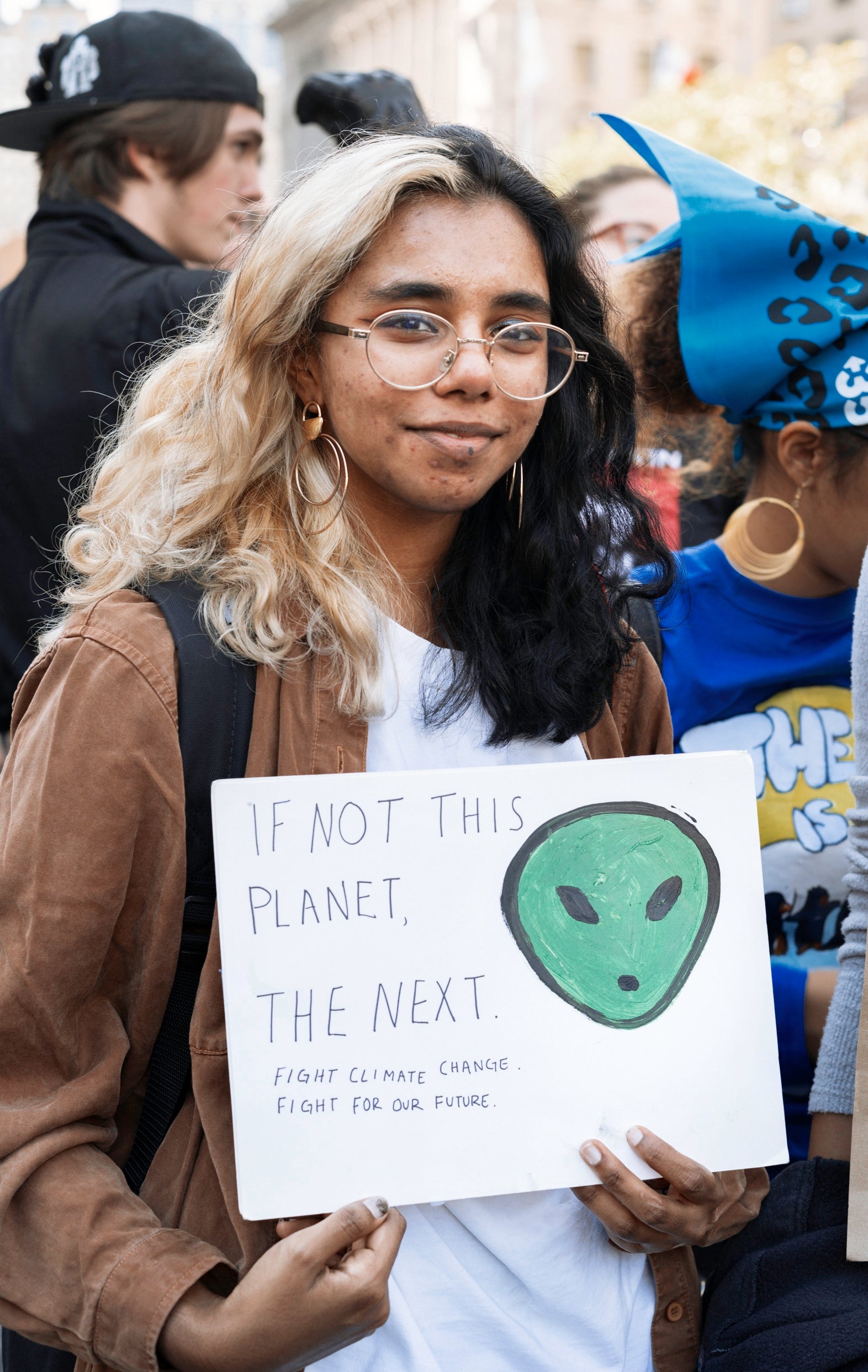
It’s a lot of responsibility we have placed on these young people. I am guiltily reminded of a conversation I had with a 12-year-old girl named Charlotte two years ago as part of my photographic series Twelve, which documents 12-year-old girls growing up in New York City. We were discussing the history-changing activism of the Parkland teens, and I asked if she felt she, too, could make a difference.
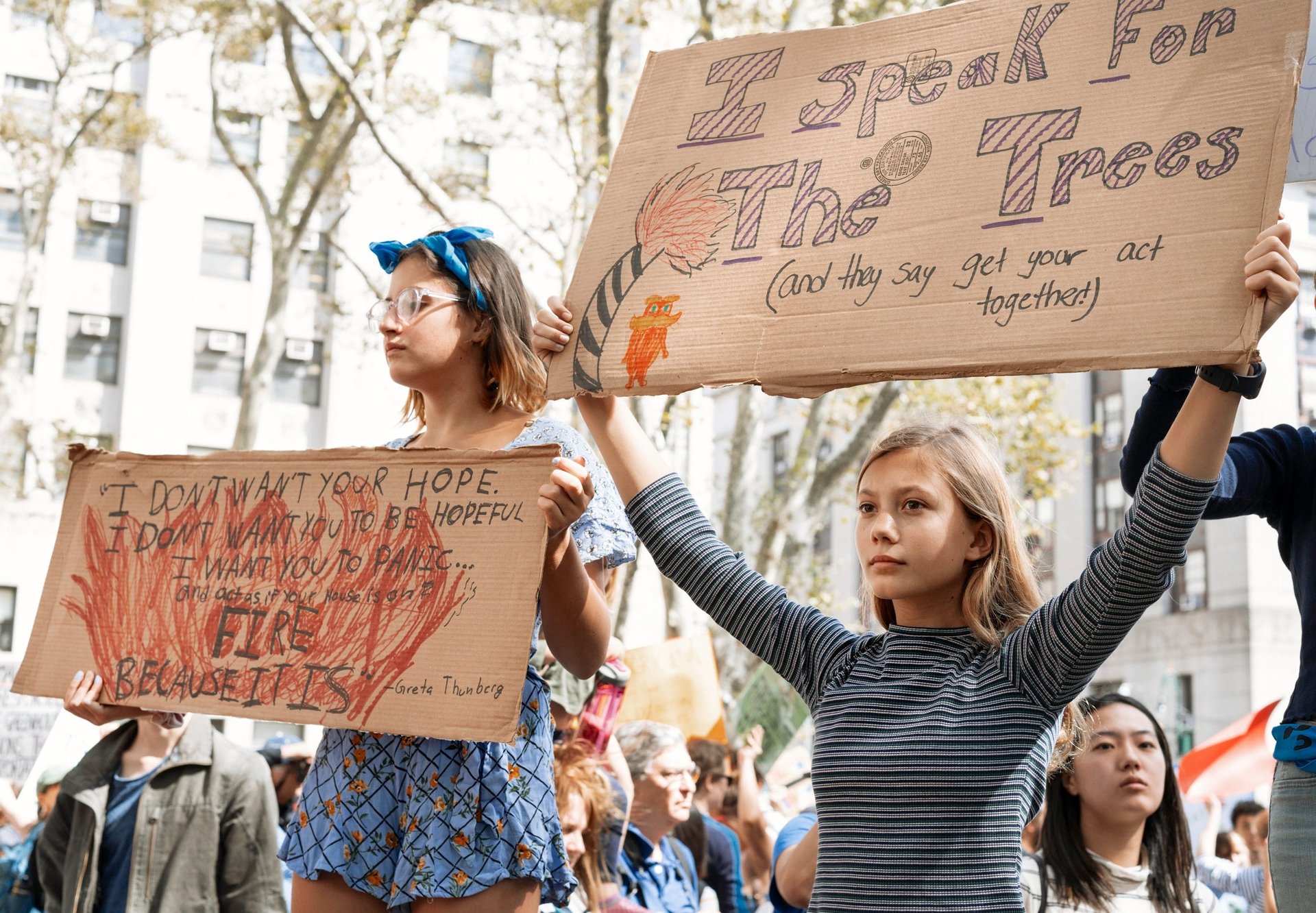
“What they are doing is incredible, but if I were to do that I’d need a bit more time because that takes a lot of courage and other emotions that may be too hard for someone younger to grasp right now,” Charlotte told me. “A 12-yearold girl in her school can’t do anything about things that grown men and women are trying to do and can’t succeed at. So, I definitely sometimes do feel really helpless.”
I told Charlotte that she has more power as a 12-year-old than she realized, and that she didn’t have to feel helpless. In some situations, she had more of a chance of being listened to than I had as an adult, I told her. Sometimes a youthful voice can cut through the din of angry adults because it is so unexpected. I encouraged her to believe that she, too, could make a difference right now, if that was important to her.
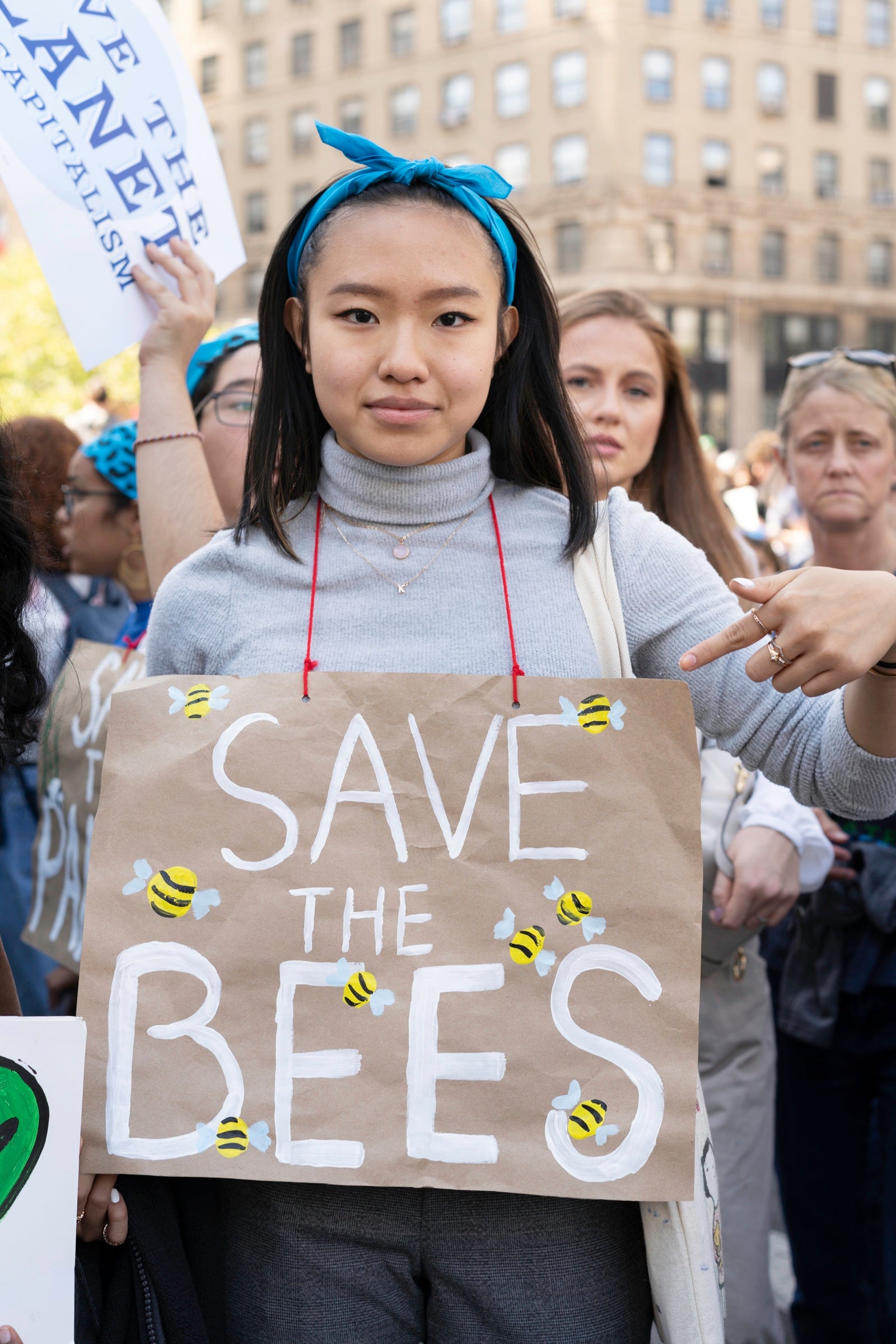
I still believe that; that we all have the ability to enact change and have impact, at any age. But I worry that we have unfairly shifted much of our own burden of demanding action onto the shoulders of children, because they are newsworthy and trending on social media.
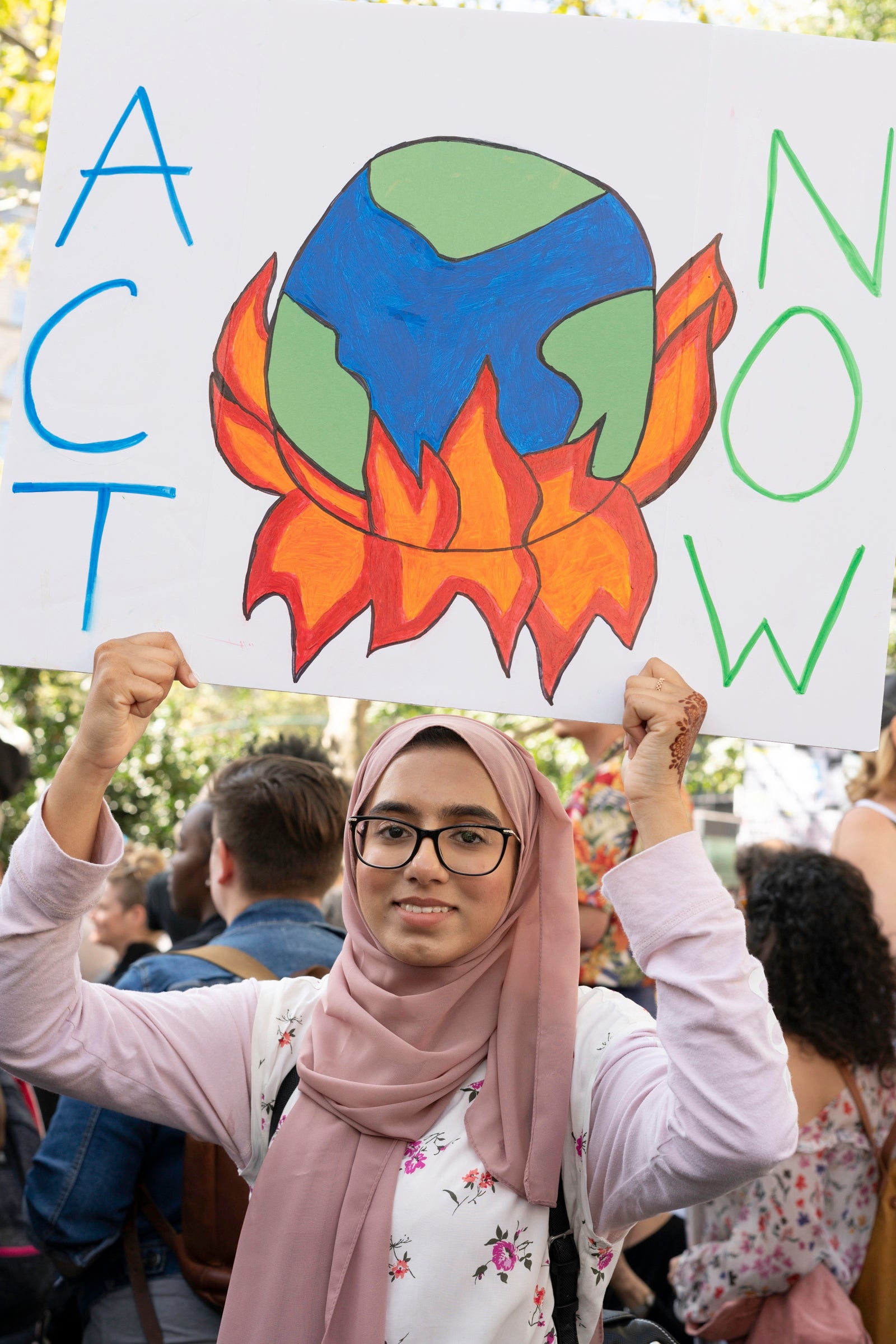
At the climate march, I saw photographers and videographers everywhere taking pictures and interviewing young children, asking them their thoughts on climate change. It made me uneasy. In my head, I weighed the pros and cons of this kind of attention and scrutiny, cognizant of the fact that I, too, was adding to it. I didn’t have an answer.
I knew I was there to support the students, and to help amplify their voices, but I couldn’t vouch for everyone else. Many of the middle school students had traveled to the protest with groups of friends straight from school, which meant that many were there without their parents or an adult.
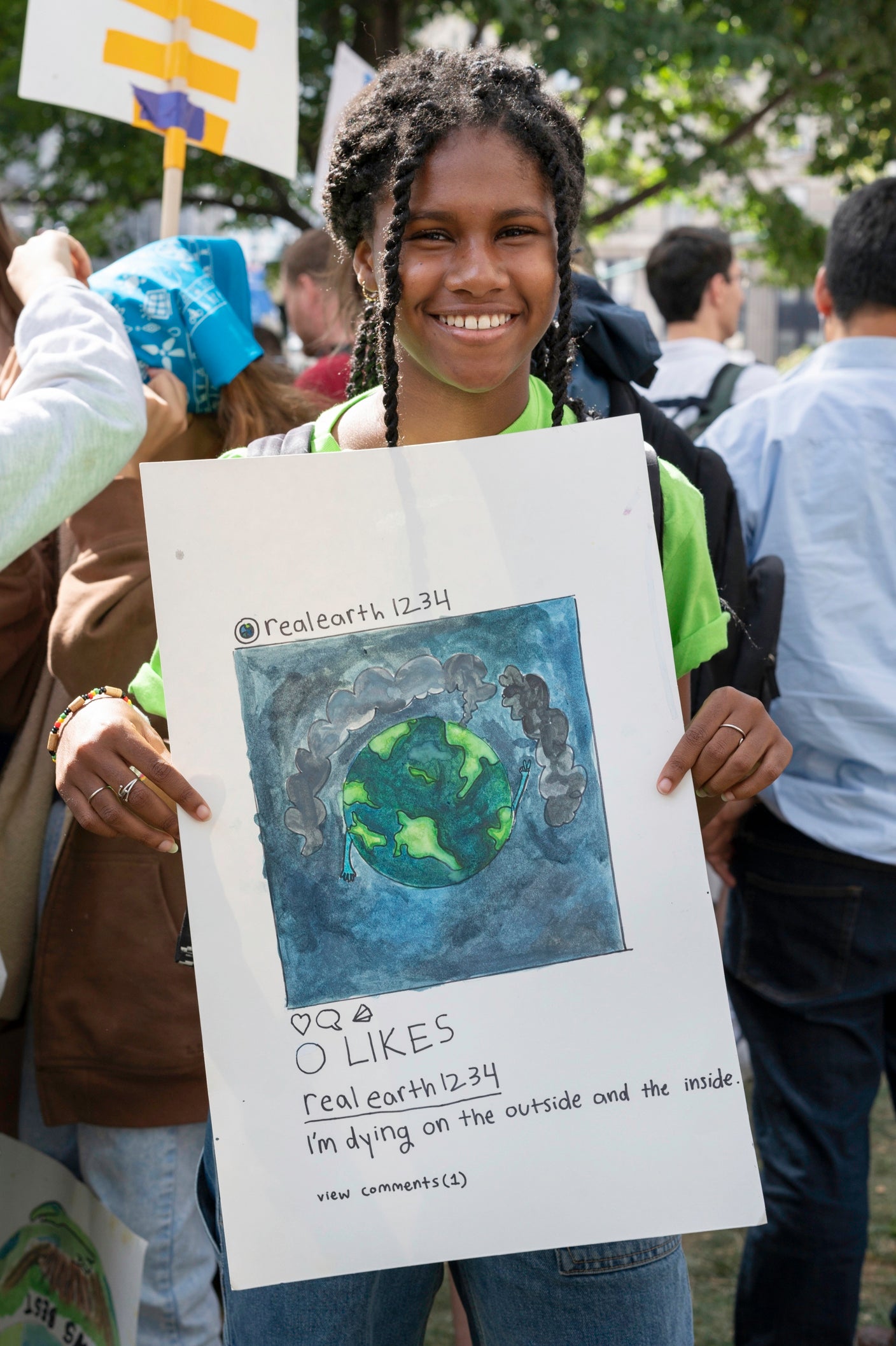
I was photographing what looked like a group of 11-year-old girls when all of a sudden they were pounced upon by a woman who handed each of them a logoed t-shirt. The girls quickly pulled the tees on over their own clothes, and the woman photographed them posing, promoting her brand.
I felt protective and dismayed. I walked over to two of the girls after, and asked them, “Do you know what this organization is? Who runs it? What they stand for?” I warned them, “Be careful who and what you support. This is your face you are putting behind their brand.”
I don’t want to believe that some adults or companies are so cynical as to use these rallies as opportunities to further their own interests. But it reminded me again just how young these activists are. And while they are heroic and to be admired, we adults need to ensure they are protected.
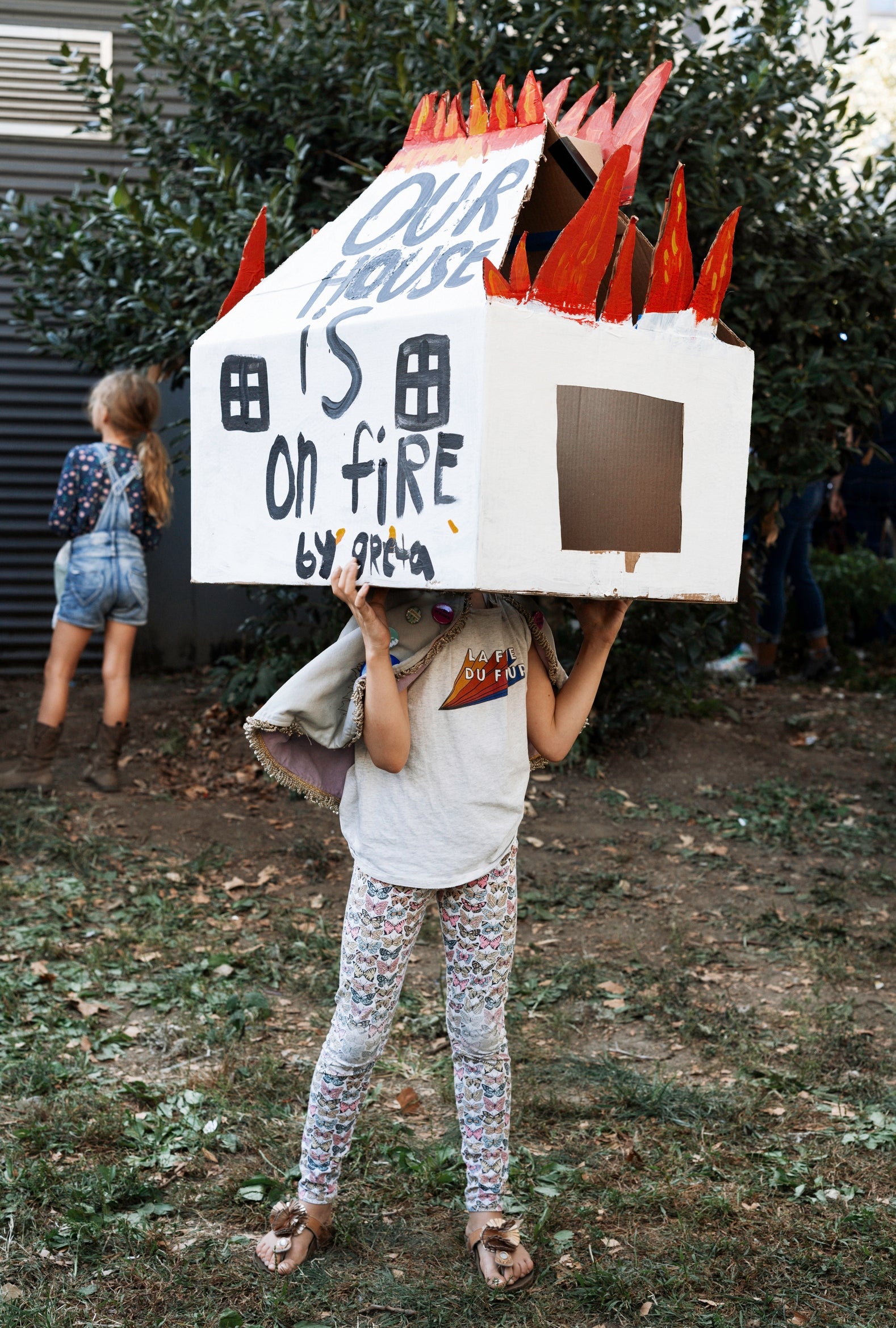
Climate activism is diverse and female-centric
Of course, we were all there because of a 16-year-old, Swedish activist Thunberg. She has managed to stand out and command so much attention because she has a singular voice. Her clarity of language and her habit of unflinchingly calling out billionaire CEOs for their greed has made her a hero to adults and children alike. Thunberg doesn’t plead or ask politely for change. She challenges, she scolds, she accuses. She is clearly pissed off and she isn’t afraid to show it.
She doesn’t talk about policy or suggest new solutions. That’s a job for the adults. She refers back to facts and science. Climate change has been solved, she says. The solution just needs to be implemented.
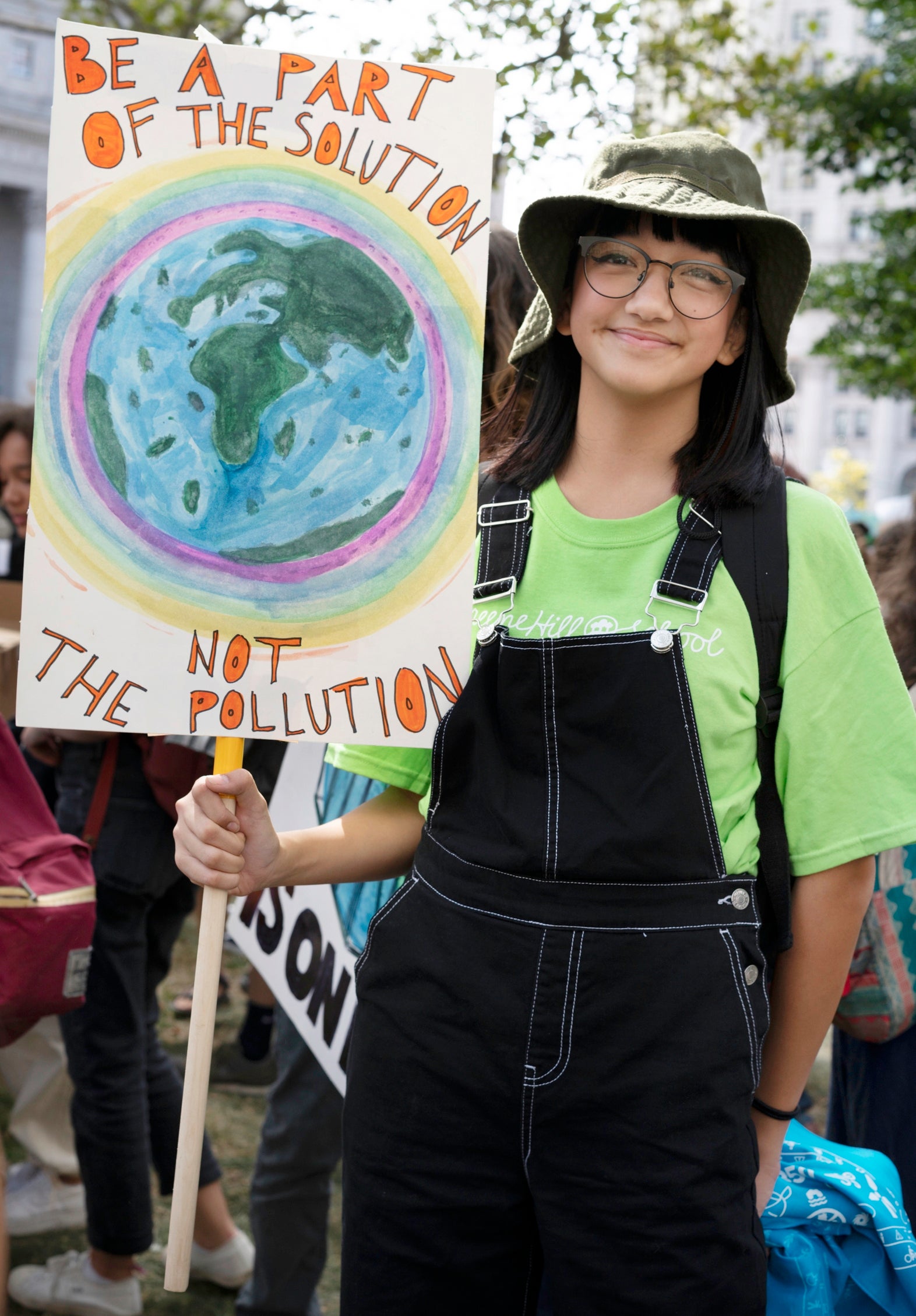
I love that girls everywhere can witness this strong young woman, who wears no makeup or revealing outfits, taking on powerful adults by delivering simple, searing truths.
There has been criticism that Greta receives more press than other young climate activists of color, who have been actively engaged for longer. This is indisputable, and the bias is real. Thunberg is one of many girls and young people who are climate activists.
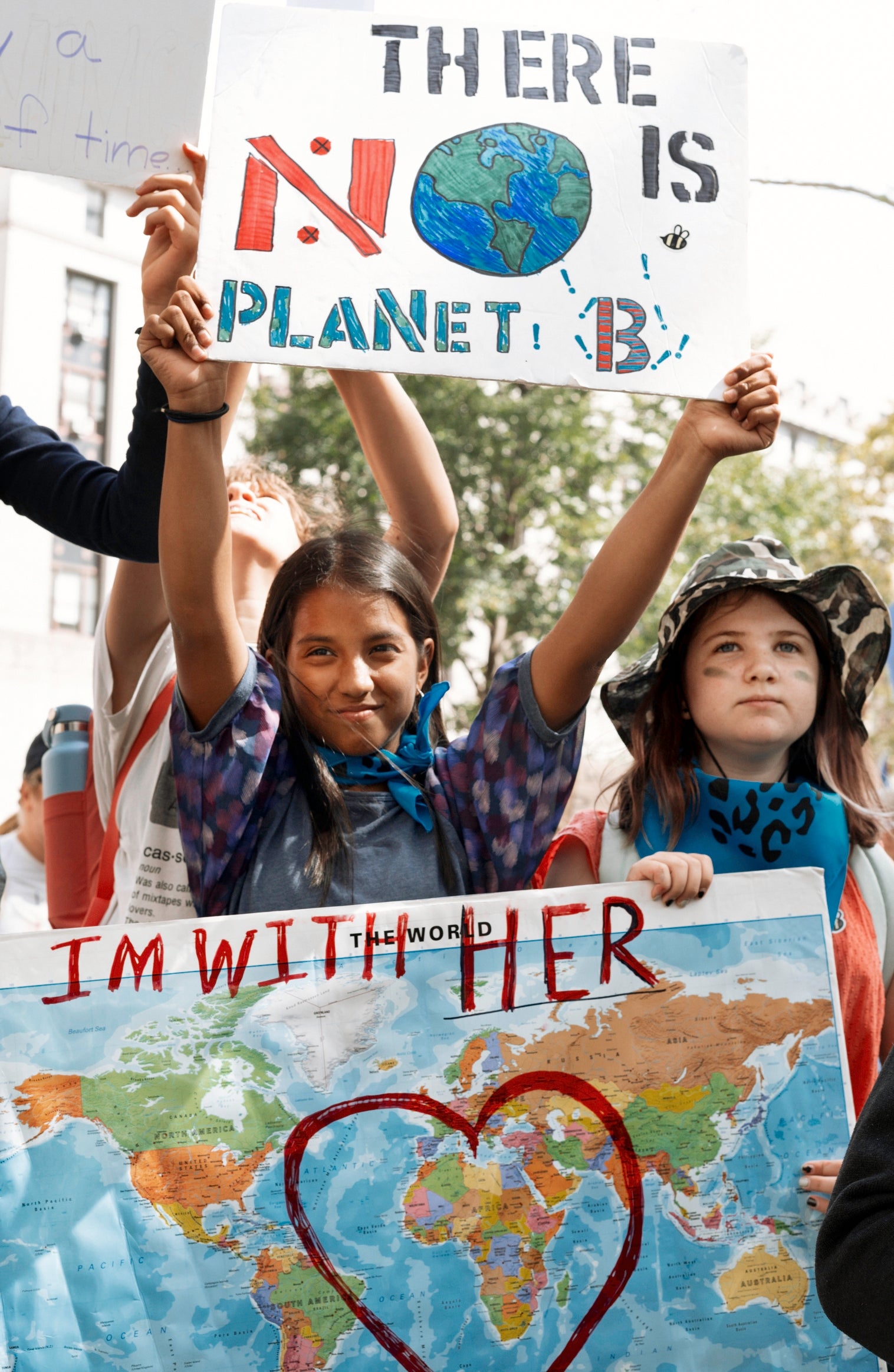
It’s important to remember that the responsibility lies with the media, not with Thunberg, who has been consciously amplifying the voices of other climate activists and bringing them up with her when she has the spotlight. I attended an event at the Ethical Society earlier this month where Thunberg was the headlining guest. The program also featured four indigenous climate activists who spoke before she came on stage: youth leaders Xiuhtezcatl Martinez, Xiye Bastida, and Vic Barrett, as well as Indigenous Amazon leader Tuntiak Katan.
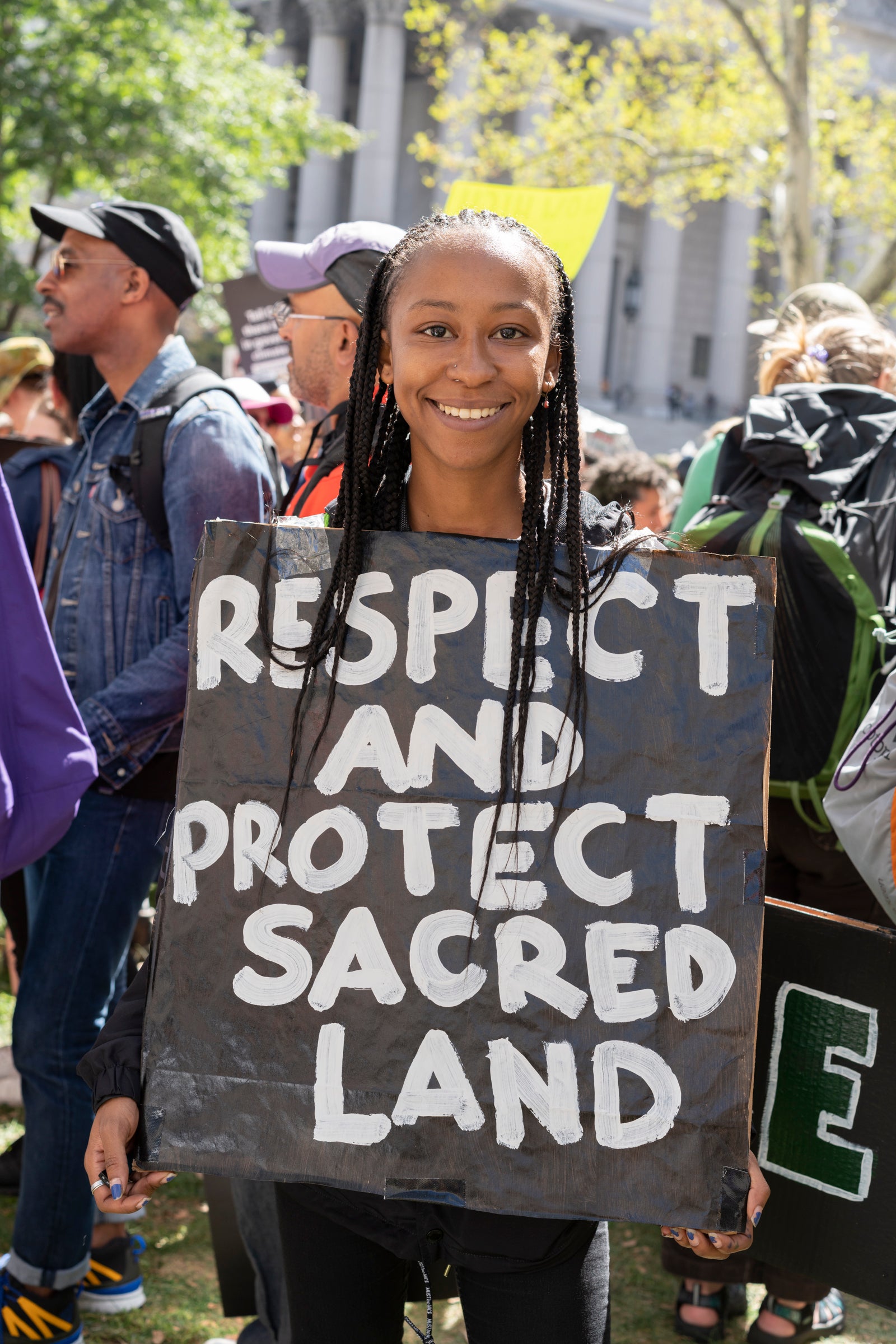
We talk about how native and indigenous groups are the most effective and appropriate guardians of our climate, as a demographic that has always been dedicated to protecting and respecting the land. This makes sense; they are the ones closest to the crisis and most immediately at risk. The world needs to do a better job of listening to their voices in public climate conversations and policy decisions. But people should be wary of turning to them to solve the climate crisis alone, the same way that we need to consider the weight and magnitude of the burden we’re handing our children, and the things we’re asking them to fix: an ailing planet; gun safety—issues of basic survival.
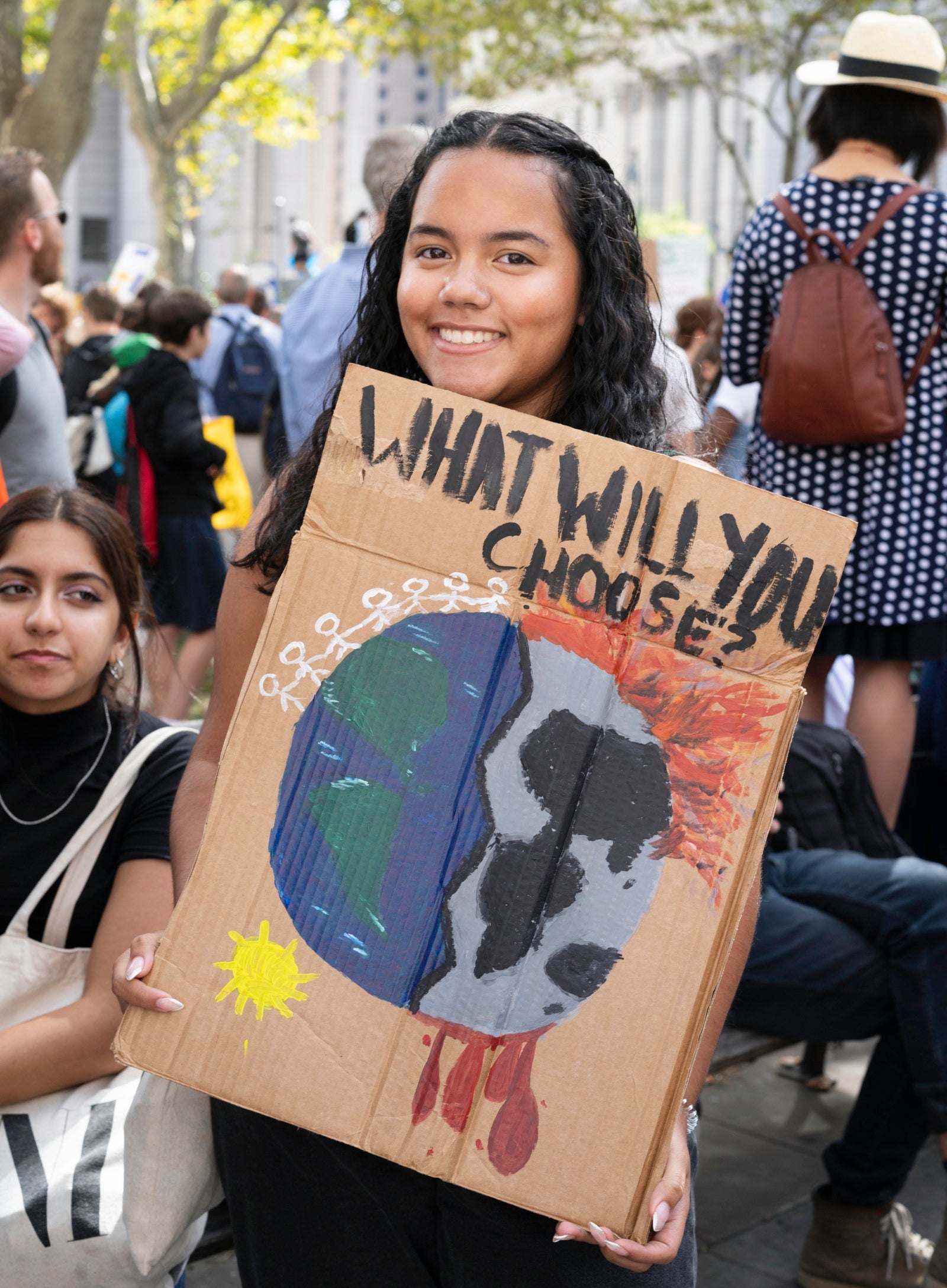
Kids are marching to let us know that change is coming, whether politicians and business moguls like it or not. We need to let them know that adults will rise to the challenge. I want our children to go back to being children.